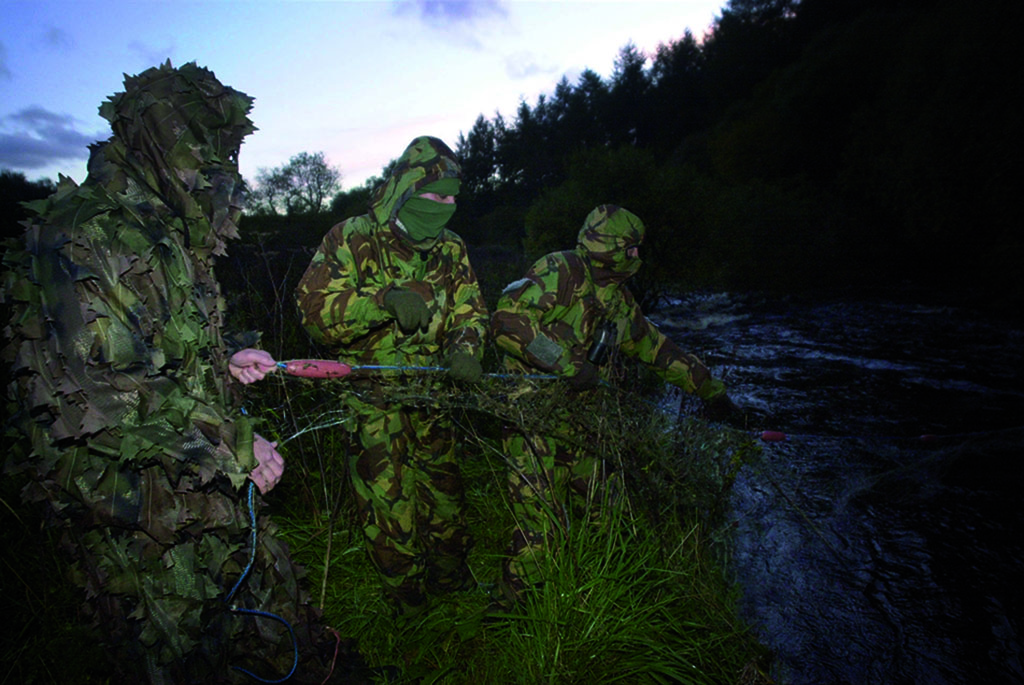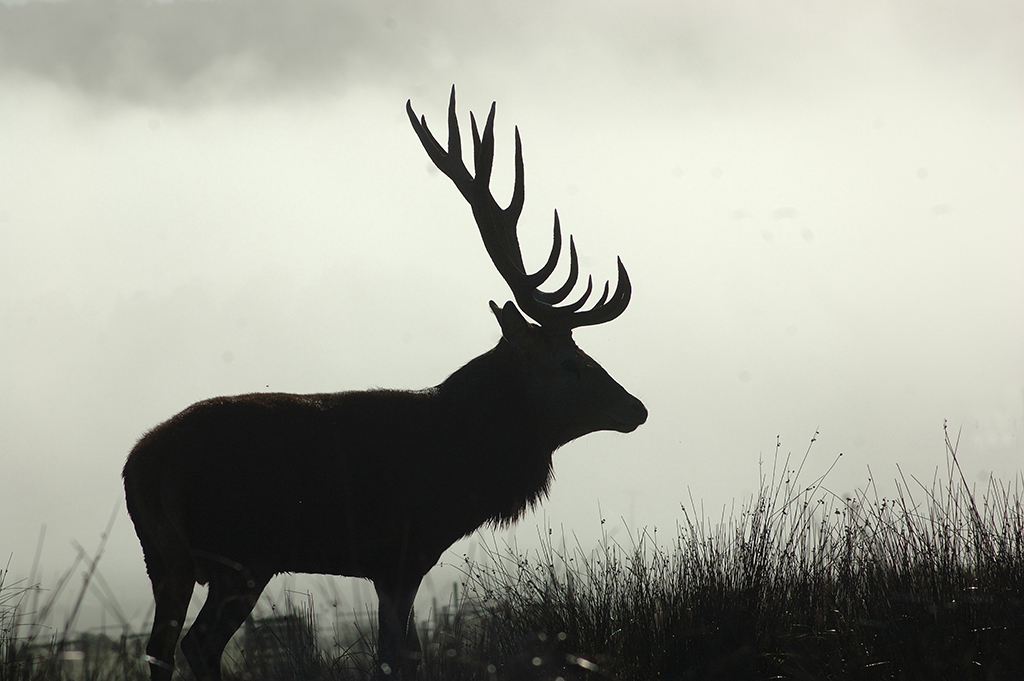
Poaching is a danger to Scotland’s food economy
Poaching is back – only now the traditional one-for-the-pot merchant has been joined by organised criminal gangs systematically looting our natural larder.
Thought to be a problem that had been consigned to the bad old days of the 1980s by the advent of cheap salmon from fish farms, a plentiful supply of venison from deer farms and cheap imports from New Zealand, a perfect storm of circumstances has seen a dramatic resurgence in poaching across the country.
‘We speak to gamekeepers, stalkers and ghillies every day of the year,’ said Kenneth Stephen of the Scottish Gamekeepers Association. ‘And what we hear it is clear that poaching is back as a major problem right across the country. Its nature may have changed very considerably, but there is no doubting its scale and impact.’
The perception of poachers is still of almost quaint one-for-the-pot local characters who exploit their knowledge of the river or hill to feed themselves and earn beer money.
Even though there were many prolific poachers in the 1980s who built houses on the back of their nocturnal activities – just ask any longstanding Lochaber ghillie to give you a tour of Fort William and they’ll quickly point out a whole clutch of such houses – while river systems such as the Grimersta, Creed and Gress on Lewis were systematically raped for commercial gain by local gangs, this perception was once largely true. Poaching was a crime committed by locals, even when its scale threatened to get out of hand.
Now, however, as well as an upsurge in local poaching once more, organised crime has also entered the poaching trade on an almost industrial scale. With the high prices that wild salmon fetches in smart restaurants, and with a spike in the price of venison prices caused by a seemingly insatiable demand, poaching has never been more profitable.
A commercial netting station would sell a wild 12lb spring salmon for over £100, while venison’s current value of around £2.50 a kilo means an average red deer stag will fetch £150 and a roe deer £50, a huge increase on the prices of ten years ago.
An experienced two-man team can lay up to half a dozen gill nets on a river in an evening, with each net capable of catching up to fifty fish worth over £100 each. In theory, at least, it’s eminently feasible for a twoor three-man team to earn a decent five-figure sum for a night’s work.

Members of a covert water bailiff team from The Salmon Fisheries Protection Board who work under the cloak of darkness pulling in a net left by a poacher (Photo: Christopher Furlong)
‘The rewards on offer mean that the profile of poaching has changed to sophisticated, organised wildlife crime,’ agrees Stephen.
‘The result is that we’re now seeing criminal gangs from the cities get involved in poaching both venison and salmon. This is a particularly worrying development: where stalkers and ghillies used to have a good idea who they were chasing around the woods and riverbanks, now they could easily run into people who would think nothing of beating up someone who tried to stand in their way.’
The authorities are not completely clueless about which gangs are responsible, but are struggling to catch anyone in the act. A gang from Dumfries, for example, is understood to be hitting major rivers once, with the Dee recently getting a particularly bad hammering, and then returning home with their booty. There’s also a crew of Eastern Europeans, understood to be from Glasgow.
‘The thing is that these gangs, which are often just two, three or four people, are willing to travel huge distances,’ said Charlie Everitt, the Investigations Support Officer for the National Wildlife Crime Unit. ‘They will also come with quite sophisticated kit, such as night vision equipment, and the fact that mobile phones now work in most rural areas means they can station a lookout and be away as soon as they see a police or bailiff vehicle.’
The distances that poachers will travel was demonstrated at the end of May in Fort William’s Sheriff Court when Arron McGregor, a 24-year-old deer stalker from Dumfries House in Cumnock, Ayrshire, and 47-year-old game dealer Brian Fletcher from nearby Stevenson were convicted of poaching deer at Glen Etive in Glencoe and fined £400 and £600 respectively, with both men losing their gun licences and forfeiting their rifles. Their lawyer admitted that both men had undertaken the round trip of 250 miles ‘specifically to make money’.
The perception that the problem is getting gradually worse is borne out by the statistics.
The Deer Commission for Scotland has officers covering all regions across Scotland to enforce the law. In 2010, 103 cases of deer poaching were reported compared to just 33 cases in 2008, and that number is believed to have risen since then. It’s much the same trajectory for salmon poaching, with 28 incidents in 2008, 65 in 2010 and over 100 last year. These might seem relatively small figures, but poachers are rarely caught so the true figures are far higher.
The impact upon the £100m deer stalking industry or the £74m salmon and sea trout fishing industry is difficult to quantify, and it’s easier to pinpoint the cost of combating poaching. In 2011 there were 328 water bailiffs operating in Scotland, whose employment cost much of the £4.25m of District Salmon Fishing Boards’ expenditure. Those bailiffs confiscated 150 illegal nets in 2011, a figure which anecdotal evidence suggests continues to climb.

The price of venison will rise is poaching continues
There are currently too few bailiffs to combat organised gangs, with the four bailiffs on the Spey covering a vast area of riverbank plus the Moray Firth, where poachers regularly deploy gill nets. Ghillies and stalkers still question how seriously the police treat poaching, while the law is on the side of the poachers, who need to be caught red-handed.
This is difficult when bailiffs travel in cars visible from miles away, while gill nets tied off by 50lb breaking strain line means that a poacher can bring a net on his own within a couple of minutes. Because any car used by a poacher is liable to be destroyed, deer poachers travel by quad bike to either shoot or course a deer with a lurcher, then conceal the carcass next to a road and pick it up at night in a process that takes seconds. Once they are on a public road, a water bailiff has no right to stop or search a car.
When poaching was a small-scale cottage industry run by locals, the biggest issue was always getting poached fish and venison to market, with the easiest way to disrupt the chain being to target game dealers, lorries and restaurants.
Proof of how poachers have been trying to square that circle came in almost comic fashion three years ago near Spean Bridge when the owner of Lochaber Game, well-known Fort William businessman Johnny Martin, dropped dead due to a heart attack while poaching deer on the Achnacarry Estate and was left on the moor by his companion(s).
One of the major problem, says Roger Knight, director of the Spey Fishery Board, is that ‘fines are usually in the hundreds of pounds rather than thousands, which is just not adequate to prevent the illegal killing of fish.’
When in 2011 underwater cameras captured images of Thomas Mullen and his son Daryl poaching on the River Ericht in Perthshire, their punishments upon conviction were £150 worth of unpaid community work and a fine of £360 respectively, less than the value of an evening’s poaching.
The value of more stringent punishment was shown in Fort William when the sheriff fined three men caught poaching salmon on the Lochy £1000 each and poaching ceased for almost two years.
Nor are salmon and deer the only species targeted.
In 2008 130 endangered freshwater mussels were extracted from the South Esk River in Angus in a systematically planned theft for which the possible fine was up to £1.3m, while hare coursing is also a growing problem.
- This feature was originally published in 2013.
TAGS

